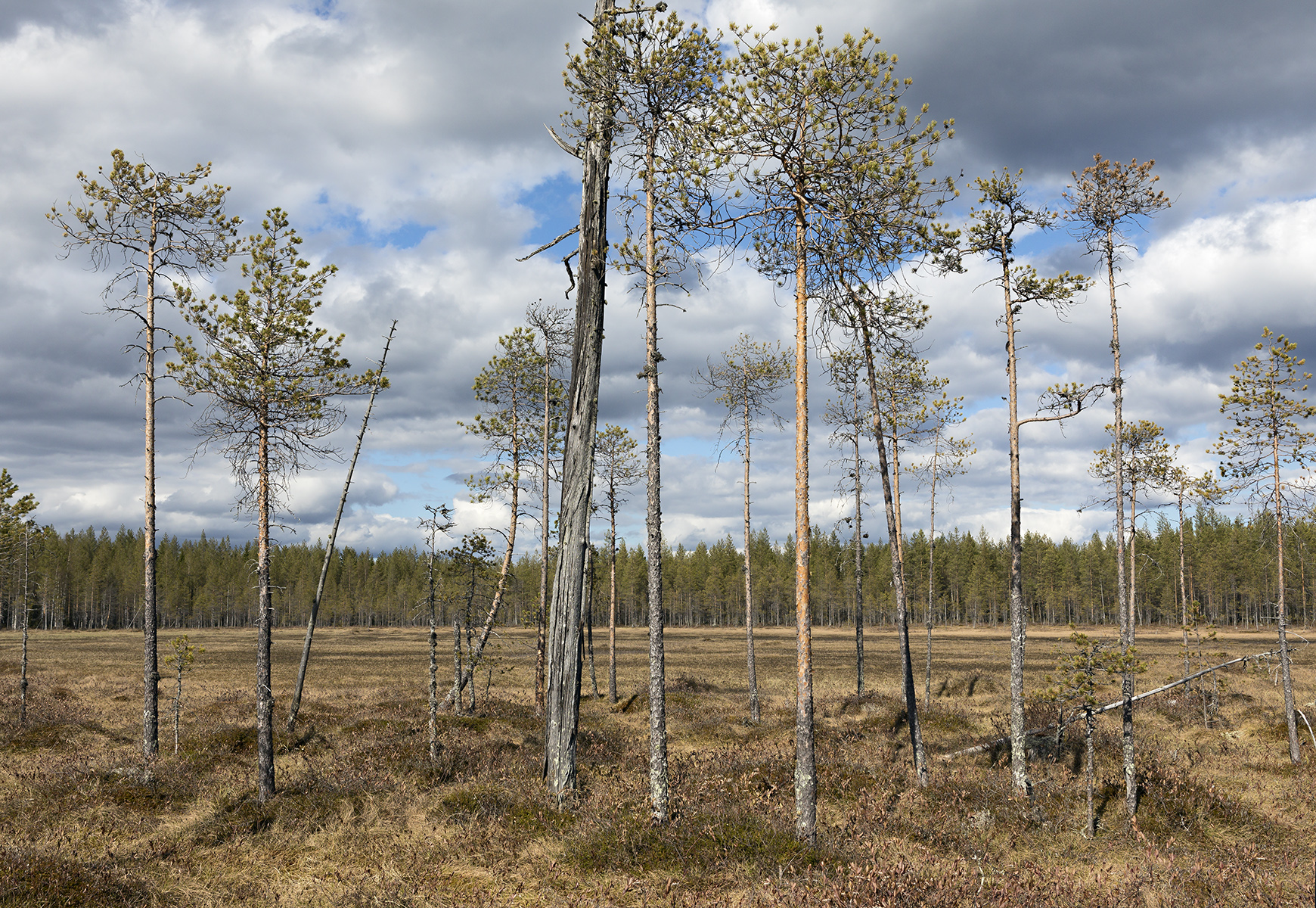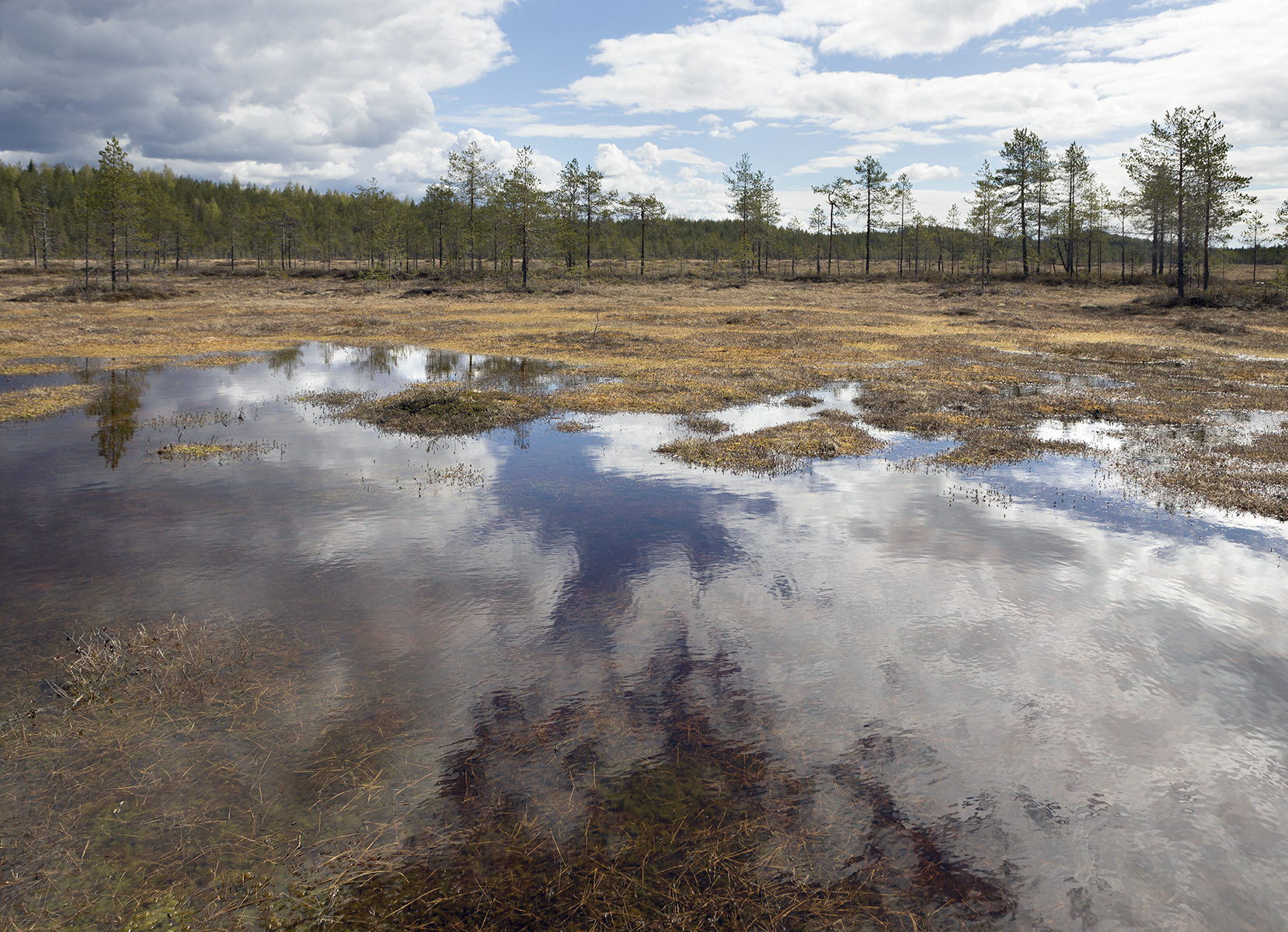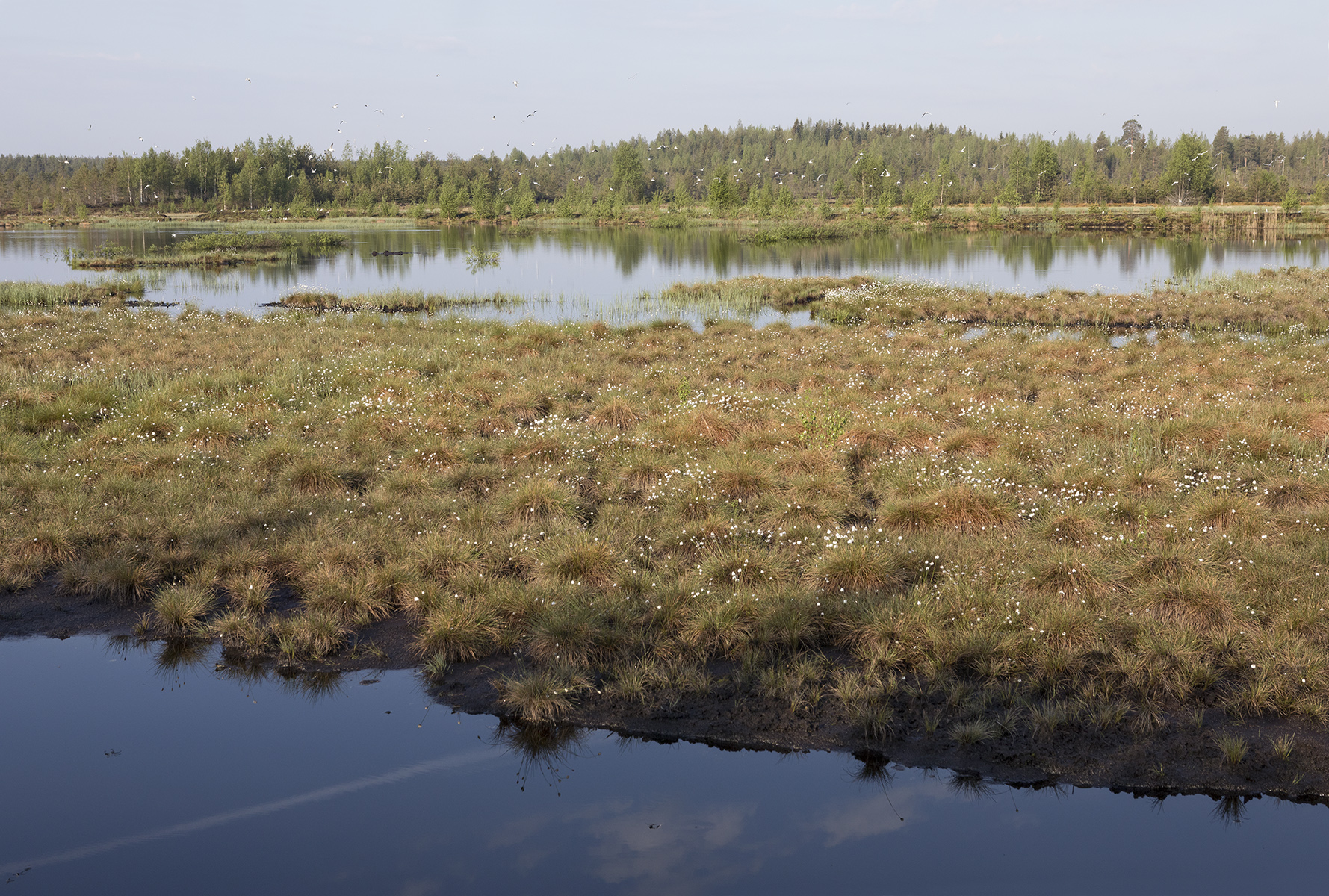Need of a Global Wetland Restoration Programme: Lessons from Finland
By Tero Mustonen, 5 May 2025
Research article
A restoration programme for peatlands in the Finnish boreal (northern mostly coniferous) landscapes points to a positive solution for creating biodiversity hotspots, carbon sinks (sites that trap and store carbon) and water protection measures. Restoration and rewilding can also alleviate equity issues associated with conservation and Indigenous and traditional communities. As an example, the river Jukajoki is recovering after a decade from fish deaths resulting from degraded peatland discharge. Exportability of wetland restoration could be achieved across the 'boreal space', here meaning the northern woodlands from East Siberia to Finland and Sweden and then across Canada and Alaska, i.e. the boreal ecosystems.
River Jukajoki, an eight-kilometer-long boreal (northern coniferous dominated ecosystems) small river in North Karelia, Finland is meandering beautifully in the middle of the snowy forests. It is situated in the larger Pielisjoki river system and basin, a home to the unique and highly endangered land-locked Atlantic salmon [T. Mustonen, 2013]. If we would travel down the Jukajoki stream a few hundred meters from the start, we would see newly-restored trout and grayling spawning areas and juvenile fish habitats waiting for the renewed stocks to arrive in early 2020s [Selkie, 2019].
If we would see the same site in June 2010, a decade before, we would witness dead fish floating belly-up in a stream where the adjacent ditches would carry pH 2,77 acidic water and 330,000 micrograms / litre Fe iron amounts. The river would be devoid of all life [T. Mustonen, 2013].
What happened in-between?
Jukajoki river like most boreal rivers in Northern Russia, Finland, Scotland, Sweden and Canada have large peatlands and wetlands within its catchment area. Depending on the geographical location of a site, these wetlands and boreal peatlands are either in a pristine condition (for example northern Canada and Siberia) or under heavy human-induced change (Finland) from forestry, ditching for farmland and peat production. Peatlands are consisting of decomposed plant and organic matter that have evolved since the Ice Age in the Circumpolar North and boreal. Peatlands, marshes and associated wetlands are and have been major carbon sinks [Conservation of Arctic Flora and Fauna Caff, 2013; Arctic Monitoring and Assessment Programme AMAP, 2017; M. Wauthy et al., 2018; E. Post et al., 2019].

They are also central for water quality – They act as buffers [T. Mustonen and K. Mustonen, 2018; M. Wauthy et al., 2018]. When they can function as post-Ice Age habitats they collect water at floods and run-off seasons (for example during snow melt events) and release waters during droughts and low water. They also cleanse the waters that flow through them. In the boreal forests and aquatic habitats they are natural filters. For many traditional and Indigenous communities wetlands and marshmires are central for their food security and well-being [T. Mustonen, 2014], from being hunting grounds to community-conserved areas (ICCAs, see more in [T. Mustonen and H. Kontkanen, 2019]).
Peatlands and mires are changing in the Siberian permafrost areas [Arctic Monitoring and Assessment Programme AMAP, 2017; M. Wauthy et al., 2018]. Now that the active layer of permafrost is widening these peatlands are changing their hydrological composition leading to loss of carbon sinks in the remote parts of the boreal. The permanently frozen ground is thawing. This poses an interesting dilemma – where and how do we compensate and add more sinks at a time of losing these key assets for climate security?
A partial answer may lie in the potential to restore degraded wetlands, peat lands and marshmires back to health. I am arguing for a Global Wetland Restoration Programme. This Programme should of course aim to maintain existing natural wetlands and peatland ecosystems where we can, but the potential for a major restoration action on wetlands seems to be very significant. They will also bring potential benefits to adjacent communities in terms of water quality, natural flood controls, biodiversity, hunting and berry picking grounds, tourism and recovering landscapes where applicable.

Let us return back to river Jukajoki.
Again, what happened in the decade between the time when the fish lost their lives and the trout habitat rehabilitation ?
The actual fish death event took place because naturally very acidic marshmire wetland, Linnunsuo, had been ditched in 1980s and altered the water levels and in the process this exposed the acidic soils to air, and subsequently created the 2,77 pH conditions that killed all the fish once it was released into the main river [T. Mustonen, 2013]. This particular peatland had post-Ice Age sulphuric soils and acidity that became a problem once it interacted with air. This was after a drought and a thunderstorm that triggered the event in 2010 and 2011.
As a first level of remedy, the peat lands that were the source of the problem were converted into a 110 hectare wetland that submerged the acidic lands. Secondly I led a decade-long catchment area restoration and rewilding programme, that allowed the re-creation of small wetlands for water protection, biodiversity and acidity control through the whole river catchment area [Selkie, 2019].
Now that we have a decade of science monitoring not only from the large (<100 hectare) and smaller wetlands in terms of biogeographical and limnological data but from sites across the country, what have we seen? (We have been expanding the measures all across Finland between 2015-2024).
Degraded peatlands that have been well-designed and turned to wetlands have emerged as major biodiversity hotspots. On Linnunsuo by 2020 we have witnessed 195 different bird species visiting and over 35 nesting [T. Mustonen and H. Kontkanen, 2019]. Acidity has been brought under control throughout the wetland. We are aware of the capacity of the wetland to stop carbon dioxide emissions and as succession proceeds Linnunsuo will emerge as a much-needed boreal wetland carbon sink in the future. Some sites in Scotland have demonstrated a return to a sink in a decade [V. Gewin, 2020]. The water quality, biodiversity and future climate sink indicators are working.
What about the local community?
Jukajoki river is situated in the space of two boreal villages, Alavi and Selkie. The original fish deaths were detected by the local fishermen that alerted the villages to act on the restoration and rewilding work. Linnunsuo wetland was subsequently designated as the second Indigenous- and Community Conserved Area in Finland [“Explore Case Studies: Linnunsuo, Finland”, 2020]. Local hunters and a ranger programme is maintaining a community based monitoring (CBM, [N. Johnson et al., 2015]) programme as well as keeping invasive species such as minks and raccoon dogs in check. Local school children are amongst the over 1000 yearly visitors to Linnunsuo a decade after industrial ruin.

The smaller wetlands re-created in the restoration and rewilding work are working equally well across a range of critical indicators. Sites like Savisuo wetland, a four hectare site, are preventing acidic discharges and organic loading and they have emerged as functioning habitats especially for water birds like goldeneye and teals. Similar results are emerging from our other pilot rewilding sites in the Western Kuivasjärvi catchment area (Salojenneva), as well as the boreal Koitajoki system at the Russian border.
Global Wetland Restoration Programmes are sorely needed across those lands and countries where peatlands constitute a major potential rewilding areas, such as Canada, Scotland, Ireland, Sweden, Finland and Northern Russia. As carbon sinks are being lost elsewhere either due to the direct land loss, climate change (permafrost melt) or other reasons the boreal northern areas have a potential to transform into new sinks in this century of climate disruption.
They can be designed and nurtured back into health with the local communities and Indigenous peoples where applicable for example by designating them as Indigenous and Community Conserved Area sites under the International Union for Conservation of Nature and United Nations. This addresses the equity issues in conservation that have prevented success in the past. Renewed wetlands as major biodiversity hotspots also provide spatial and temporal ‘safety’ under species on the move and climate-driven redistribution of species northwards [Snowchange, 2020].
Fast forward to 2020s:
We have our winter gillnets under the ice at the delta of Jukajoki. They remain relatively clean as most of the organic loading have been addressed upstream. We are receiving a steady stream of northern pike, yellow perch, common and silver bream and burbot in our nets.
Rivers are the children of their catchment areas – by enabling a large-scale return of wetlands across the Jukajoki system, our river is alive and healthy again.
Equally so it enabled the Landscape Rewilding Programme of Snowchange that is affecting 55,000 hectares across 100 sites in Finland by April 2024 making it the largest rewilding programme in the country.
- Explore Case Studies: Linnunsuo, Finland. Indigenous and Community Conserved Areas (ICCA). Retrieved (2020) from http://www.iccaregistry.org/en/explore/finland/linnunsuo.
- Arctic Monitoring and Assessment Programme AMAP: Adaptation actions for a changing Arctic: Perspectives from the Barents Area, AMAP, Oslo, Norway, 2017.
- Conservation of Arctic Flora and Fauna Caff: Arctic Biodiversity Assessment. Status and trends in Arctic biodiversity., 2013.
- V. Gewin: How Peat Could Protect Our Planet?, Nature, vol. 578, 204-208, https://doi.org/10.1038/d41586-020-00355-3, 2020.
- N. Johnson, L. Alessa, C. Behe, F. Danielsen, S. Gearheard, V. Gofman-Wallingford, A. Kliskey, E.-A. Krümmel, A. Lynch and co-authors: The contributions of community-based monitoring and traditional knowledge to Arctic observing networks: Reflections on the state of the field, Arctic , vol. 68(5), 28–40, https://doi.org/10.14430/arctic4447, 2015.
- T. Mustonen: Power discourses of fish death: case of linnunsuo peat production., Ambio, vol. 43(2), 234-243, https://doi.org/10.1007/s13280-013-0425-3, 2013.
- T. Mustonen: Endemic time-spaces of Finland: Aquatic regimes, Fennia – International Journal of Geography, vol. 192(2), 120-139, 2014.
- T. Mustonen and H. Kontkanen: Safe Places: Increasing Finnish Waterfowl Resilience Through Man-Made Wetlands, Polar Science, vol. 21, 75-84, https://doi.org/10.1016/j.polar.2019.05.007, 2019.
- T. Mustonen and K. Mustonen: Koitajoen erämaataloudet muuttuvassa ympäristössä (Wilderness Economies of Koitajoki River), 2018.
- E. Post, R.B. Alley, T.R. Christensen, M. Macias-Fauria, B.C. Forbes, M.N. Gooseff, A. Iler, J.T. Kerby, K.L. Laidre and co-authors: The polar regions in a 2 C warmer world, Science Advances, vol. 5(12), https://doi.org/10.1126/sciadv.aaw9883, 2019.
- Selkie: Elpyvä Jukajokemme, booklet, 2019.
- Snowchange (03 2020): Snowchange trains young ice fishermen as climate change impacts deepen, Snowchange. Retrieved from http://www.snowchange.org/2020/03/fishing-for-the-future-climate-and-young-fisherman-in-finland/.
- M. Wauthy, M. Rautio, K.S. Christoffersen, L. Forsström, I. Laurion, H.L. Mariash, S. Peura and W.F. Vincent: Increasing dominance of terrigenous organic matter in circumpolar freshwaters due to permafrost thaw, Limnology and Oceanography Letters, vol. 3(3), 186-198, https://doi.org/10.1002/lol2.10063, 2018.
